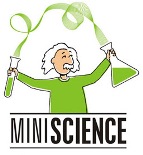
"To infinity and beyond: From neutron stars to neuroengineering"
Wednesday evenings, February 25 to April 15, 2015
About the readings: Some of the readings below are articles in scholarly journals. You may enjoy reading just the abstract, or other portions of the article such as the conclusion or discussion, if you find the whole article too long or technical.
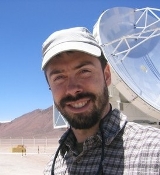
Seeing the big bang (February 25, 2015)
Speaker: Prof. Matt Dobbs, Department of Physics
Synopsis
Throughout history, we have been looking up at the cosmos asking big questions such as: How did the universe begin? How might it end? What is it made of? We have come a long way in the quest towards answers to these questions. In this talk, you will journey with me on an adventurous pursuit to build new telescopes at the far reaches of the planet to learn about the universe as a whole. Our instruments are operating at the geographical South Pole and at 5000m altitude on the Atacama Plateau in Chile. By developing and deploying new technology, we may have the tools to image the universe a tiny fraction of a second after it began—effectively “seeing” the Big Bang.
Readings and links
- The Universe Adventure: What do we really know about our universe? This website offers an adventure through time and space, to the outer reaches of human knowledge.
- McGill Cosmology Instrumentation Laboratory: Website, Facebook
- CHIME, the Canadian Hydrogen Intensity Mapping Experiment telescope
- SPT, the South Pole Telescope
- The Commute to the SPT, YouTube video
- Virtual Tour of the South Pole
About the speaker
Matt Dobbs is an Associate Professor in the Department of Physics at McGill University and holds a Canada Research Chair in Astro-Particle Physics. Dobbs won a Sloan Foundation fellowship in 2010, the Herzberg Medal in physics in 2014 and the Dunlap Award for Astronomical Instrumentation in 2014. The aim of his research is to improve our understanding of the fundamental constituents of the universe — including its origin, history, and fate — as well as providing new insight into the early universe, where the laws of particle physics and cosmology intersect. His research group at McGill is building novel instrumentation and experiments to explore the early universe. He has built, installed, and operated new telescopes at the far reaches of planet earth and above: from a telescope at the South Pole, to the first major new research telescope to be built on Canadian soil for many decades, to a telescope carried to the stratosphere by a NASA balloon.
NO LECTURE (March 4, 2015)
McGill Reading Week
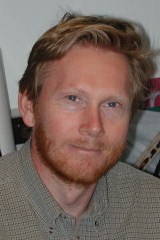
From telescopes to microscopes: Looking for little green bugs on Mars (March 11, 2015)
Speaker: Prof. Lyle Whyte, Department of Natural Resource Sciences
Synopsis
Are we alone? With the constant stream of data arriving daily from the surface of Mars, this fundamental question of humanity has never been so significant. What makes it so compelling is the recent realization that microbial life is extremely hardy and can survive and even thrive in very harsh environments previously thought uninhabitable on Earth: acidic streams, alkaline ponds, salt lakes, hot springs, and cryoenvironments. The primary targets for astrobiology investigations of other solar system bodies are Mars, in the short term, as well as Jupiter’s moon Europa and Saturn’s moon Enceladus, in the mid to longer term. Extremely cold temperatures characterize these targets, and in this respect, polar cryoenvironments, especially briny subzero habitats, arguably offer the best terrestrial analog sites that resemble conditions known or suspected to exist on these worlds. This presentation will highlight how microbial life exists in Earth cryoenvironments and could inhabit subzero briny extraterrestrial environments existing on Mars, Europa, and Enceladus.
Readings
- "Life in Ice on Other Worlds." Christopher P. McKay, Nadia C. S. Mykytczuk, and Lyle G. Whyte. In Polar Microbiology: Life in a Deep Freeze. (2012) Eds. Robert V. Miller, Lyle G. Whyte. ASM Press. Washington, DC.
- "Microbial characterization of a subzero, hypersaline methane seep in the Canadian High Arctic." Thomas D Niederberger, Nancy N Perreault, Stephanie Tille, Barbara Sherwood Lollar, Georges Lacrampe-Couloume, Dale Andersen, Charles W Greer, Wayne Pollard and Lyle G Whyte. (2010) The ISME Journal 4:1326–1339.
- "Saturn moon Enceladus may hide hot springs under ice." The Associated Press / CBC News Technology & Science. March 12, 2015.
About the speaker
Professor Lyle G. Whyte's research projects focus on examining microbial biodiversity and ecology in the Canadian high Arctic and the Antarctica where very unique habitats exist, using both classical microbiology and novel genomics-based molecular techniques for studying microbial communities. These habitats include unique cold saline springs, permafrost and ground ice, and ice shelf microbial matt communities. These investigations explore the biodiversity, ecology, adaptations, and activity of microbial communities at subzero temperatures in cryoenvironments (subzero habitats) in an emerging field perhaps best described as cryomicrobiology. These unique cryoenvironments serve as extraterrestrial analogs for astrobiology studies. For example, his groups 2013 report of a permafrost microbe able to reproduce at —15ºC in a hypersaline environment, the coldest temperature yet recorded, has direct relevance for the search for life on other extremely cold solar system bodies such as Mars. Dr. Whyte is an Associate Professor and held the Canada Research Chair — Environmental Microbiology from 2003-2013. He is also a member of the European Space Agency ExoMars Landing Site Selection Working Group, the CSA Planetary Exploration Consultation Committee, and the PI of the NSERC CREATE Canadian Astrobiology Training Program. This YouTube video and this 2007 McGill reporter article highlight Dr. Whyte's high arctic research projects.
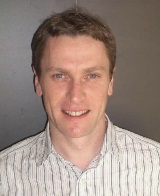
An Abundance of Other Worlds: The Exoplanet Zoo (replacing: How to grow a galaxy) (March 18, 2015)
Speaker: Prof. Andrew Cumming, Department of Physics
(Prof. Tracy Webb, Department of Physics, was originally scheduled to present, but was called away on an urgent and unexpected family matter.)
Synopsis
Prof. Andrew Cumming, "An Abundance of Other Worlds: The Exoplanet Zoo" — Professor Cumming will tell us how the last two decades have seen the discovery of thousands of exoplanets — planets orbiting other stars in our Galaxy. We now know that planets are common in our Galaxy, with most stars hosting planetary systems. These planetary systems are incredibly diverse, and often quite different from our Solar System. This has important implications for our understanding of how planets form and what the “typical” planetary system looks like. He promises to give us a tour of the known exoplanets, and to describe what further discoveries we might expect in the coming decade.
Prof. Tracy Webb, "How to grow a galaxy" — We live in a Universe of remarkable structure. From super-clusters of galaxies, tens of millions of light years across, to grand-design spiral galaxies and small rocky planets like Earth, structure exists on all scales. It wasn't always this way: through the extraordinary advancements of observational cosmology of the last several decades, we now know the Universe was homogeneous at its beginning. While the physics which links the young and smooth Universe to its underlying Dark Matter skeleton is well-established, perhaps paradoxically we know very little about how the objects composed of regular matter — the stuff you and I are made of — assembled. In a general sense, cosmological structure grows hierarchically; small systems collapse first then merge to form progressively more massive objects. But this is a violent and energetic process, triggering bursts of star formation, feeding matter onto super-massive black holes, stripping galaxies of their interstellar medium, and fundamentally shaping the complex structure we see around us today.
Readings
- Galaxy: Mapping the Cosmos. 2014. James Geach. Reaktion Books.
- "Far-Infrared Surveys of Galaxy Evolution." Dieter Lutz. Annu. Rev. Astron. Astrophys. 2014. 52:373–414.
- "The Evolution of Galaxy Structure Over Cosmic Time." Christopher J. Conselice. Annu. Rev. Astron. Astrophys. 2014. 52:291–337.
About the speaker
Professor Cumming is an Associate Professor in the Department of Physics at McGill University working in Theoretical Astrophysics. He studies the physics of compact objects and extrasolar planets. Professor Cumming received his Ph.D. in Physics from the University of California, Berkeley, in December 2000, where he worked with Lars Bildsten. He then spent a year as a postdoc at the Kavli Institute for Theoretical Physics (KITP) in Santa Barbara, before moving to the University of California, Santa Cruz as a Hubble Fellow. Professor Cumming joined the McGill Department of Physics in September 2004. He has been a Scholar of the Canadian Institute for Advanced Research (CIFAR) Cosmology and Gravity program since 2004, and was awarded an Alfred P. Sloan Research Fellowship in 2006.
Professor Tracy Webb's research centers on the growth of structure in the universe, and the formation and evolution of galaxies in particular. Her approach is to obtain data at many different wavelengths of light using the world’s largest telescopes. Each wavelength probes a different physical process and tells us something unique about galaxy formation. Professor Webb studies galaxies in the very distant and young universe (i.e., high-redshift) since because of the finite speed of light we see these systems as they existed 5-12 billion years ago, and can literally watch them form! She is interested in the role that the local environment — that is the density of galaxies, dark matter and gas — plays in this process. Professor Webb is an Associate Professor in the Department of Physics. She has a Ph.D. (2002) in Astronomy & Astrophysics from the University of Toronto, an M.Sc. (1998) in Physics & Astronomy from McMaster University, and a B.Sc. (1996) in Physics & Astronomy from the University of Toronto.
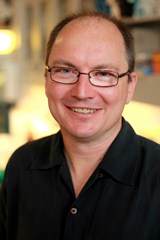
Biomimicry and the synthetic synapse (March 25, 2015)
Speaker: Prof. Timothy Kennedy, Department of Neurology & Neurosurgery, Montreal Neurological Institute
Synopsis
Nervous system deficits due to injury or neurodegenerative disease result from the loss of functional synaptic connections between neurons and the breakdown of neural networks. The McGill Program in Neuroengineering is developing a new strategy that mimics a natural synapse to recover this lost function. Using these engineered connections to communicate with neural networks holds enormous therapeutic and restorative potential for the damaged or degenerating nervous system.
Readings
- Biomimicry: Innovation Inspired by Nature. Janine M. Benyus. Harper Perennial Press.
- "Maintaining and Modifying Connections: Roles for Axon Guidance Cues in the Mature Nervous System." Thompson-Steckel G, Kennedy TE. 2014. Neuropsychopharmacology Reviews. 39(1):246-247.
About the speaker
Tim Kennedy obtained a Ph.D. in 1992 in the Department of Physiology and Cellular Biophysics at Columbia University, NYC, studying the molecular mechanisms that underlie learning and memory, working with Dr. Eric Kandel (Nobel laureate in Physiology or Medicine, 2000). He then carried out post-doctoral studies in neurodevelopment at the University of California, San Francisco, working with Dr. Marc Tessier-Lavigne (current President of The Rockefeller University in NYC), where he and his colleagues discovered the netrin gene family. Dr. Kennedy is Full Professor in McGill's Departments of Neurology and Neurosurgery, and Anatomy and Cell Biology, and is the co-director of the McGill Program in Neuroengineering (www.neuroengineering.ca). He is a recipient of the Chercheurs Nationaux award from the Fonds de la Recherche en Santé du Québec, as well as a scholarship from the Killam Foundation, and he is a Lindisfarne Fellow. The Kennedy lab at the Montreal Neurological Institute investigates the molecular mechanisms that regulate cell movement and cell-cell interactions in the mammalian central nervous system. Ongoing projects in neuroengineering aim to manipulate the mechanisms that underlie cell-cell interactions to form stable synthetic synaptic connections onto engineered surfaces.
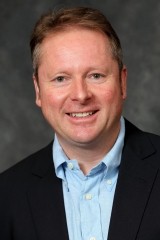
Re-imagining the brain-machine interface: Lessons from Mother Nature (April 1, 2015)
Speaker: Prof. Christopher Barrett (Department of Chemistry)
Synopsis
One of the biggest but most exciting challenges for scientists and engineers who are developing artificial materials that interface with the human body, and especially the brain, is compatibility at the micro-thin surface separating human from machine. It's not easy to fool the body into accepting an implant, and it's even more difficult to 'listen' and 'speak' in a two-way communication between biological (neural) processes and our computers. This talk will outline recent breakthroughs inspired by nature that address these bio-materials challenges , and will emphasize discoveries in these areas made in Montreal, at McGill, and at the MNI.
Readings
- On engineering the bio-compatible interface: "Faculty Highlight: Michael Rubner. Materials scientist Mike Rubner’s collaboration with chemical engineer Robert Cohen yields anti-fog coatings, synthetic "backpacks" for living cells." MIT News. October 1, 2014.
- "Controlling Brains With a Flick of a Light Switch." Discover Magazine. September 25, 2012.
About the speaker
Christopher Barrett was schooled at Queen's University in Kingston, Ontario for a B.Sc. in Chemistry and Physics in 1992, and a Ph.D. in Chemisty in 1997 on the Photo-Physics of Light-Responsive Polymers, winning Canada's Top Graduate Awards in both Polymer Chemistry from the Chemical Institute of Canada, and in Optical Physics from the Canadian Association of Physicists. Barrett then spent 2 years at MIT's Department of Materials Science and Engineering as an NSERC Postdoctoral Fellow working on self-assembly at bio-surfaces, and bio-compatibility. Barrett joined McGill Chemistry as Faculty in 2000 to set up Bio-Polymer Synthesis and Laser Characterization labs, and establish collaborations with the Center for Physics of Materials, Biomedical Engineering, and the Montreal Neurological Institute. Using natural systems as inspiration, his research designs and develops polymer surfaces and coatings that interface with biology both passively and actively. He is currently Associate Professor of Chemistry, Associate Member of McGill's School of Environment, and has been a JSPS Fellow at the Tokyo Institute of Technology in 2006/2007, and a Fulbright Fellow in 2014 at UCLA and U.C. Berkeley. Barrett has received awards for his research in Green Materials and Bio-Inspired Polymers, for his teaching of Materials and Physical Chemistry, and for his home wine and beer making.
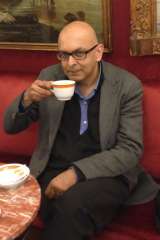
Deep Brain Stimulation: The Brain-Machine Interface in Neurosurgery (April 8, 2015)
Speaker: Dr. Abbas Sadikot, Department of Neurology & Neurosurgery, Montreal Neurological Institute
Synopsis
Neurosurgeons have increasingly harnessed the brain-machine interface to improve the condition of patients with Parkinson's disease, depression, and epilepsy. Extensive experience with deep brain stimulation therapy over the last two decades offers a better understanding of how the therapy works, an appreciation of current limitations, and a window on exciting future possibilities for modulating the brain and mind. Refinements proposed by bio-engineers and neuroscientists place us at the threshold of major innovations in this area of restorative neurosurgery. A multi-disciplinary effort by groups at McGill will allow translation of innovative brain-machine interface therapies from proof of principle in the laboratory to patients in need.
Readings
Articles for reference:
- “From anatomy to electrophysiology: clinical Lasker goes deep.” Zoghbi HY (2014) Cell. 158:1225-9
- “History, applications, and mechanisms of deep brain stimulation.” Miocinovic S, Somayajula S, Chitnis S, Vitek JL. (2013) JAMA Neurol. 70:163-71
Further reading if desired:
- “Creation of Computerized 3D MRI-Integrated Atlases of the Human Basal Ganglia and Thalamus.” Sadikot AF, Chakravarty MM, Bertrand G, Rymar VV, Al-Subaie F, Collins DL. (2011) Front Syst Neurosci. 5:71-76.
- “Deep brain stimulation (DBS) at the interface of neurology and psychiatry.” Williams NR, Okun MS. (2013) J Clin Invest. 123:4546-56.
About the speaker
Abbas Sadikot is a neurosurgeon at the Montreal Neurological Hospital and Institute, as well as a Professor in the Department of Neurology and Neurosurgery at McGill University. Dr. Sadikot is a graduate of the Faculty of Medicine at McGill University. His residency training was at the Montreal Neurological Institute and the McGill University hospitals. He also holds a PhD in neurobiology from Laval University. Dr. Sadikot specializes in the field of Functional Neurosurgery. His team operates to help normalize brain function in Parkinson's disease, severe medically intractable depression, epilepsy and neuralgic pain. He is the Director of the Cone Laboratory for Neurosurgery Research. His laboratory bench research involves understanding mechanisms of Parkinson's disease and Huntington's disease. His team is also active in development of novel computerized human brain atlases that serve as important roadmaps for surgical therapy and brain research. Dr. Sadikot's research is funded by competitive awards from the Canadian Institutes for Health Research, the National Science and Engineering Research Council, and the Parkinson Society of Canada.
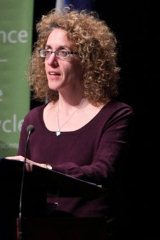
The cosmic gift of neutron stars (April 15, 2015)
Speaker: Prof. Victoria Kaspi, Department of Physics
Synopsis
Although they are thousands of light years away, neutron stars can act as very precise cosmic beacons; a cosmic gift that sheds light on some of the most interesting problems in modern science. We will explore these strange objects, explain how astronomers are using them to study issues ranging from the origins of the Universe to the very nature of matter, and even listen to the cosmic symphony they create.
Readings
- An Introduction to Pulsars, from the Australia Telescope National Facility (ATNF)
- ATNF Pulsar Education Page (link no longer available)
- About NANOGrav, the North American Nanohertz Observatory for Gravitational Waves
About the speaker
Renowned astrophysicist Professor Kaspi sheds light on cosmic mysteries. Her research is in astrophysics — specifically on an exotic type of star called a pulsar. Along with her research team, she uses the world's largest telescopes, both ground- and space-based, to study these amazing objects. Professor Kaspi is a Professor of Physics in the Department of Physics, the Lorne Trottier Chair in Astrophysics and Cosmology, and the Canada Research Chair in Observational Astrophysics. Having graduated from McGill with a B.Sc. (1989), Professor Kaspi went on to complete an M.A. (1991) and Ph.D. (1993) in Physics at Princeton. She returned to McGill from M.I.T. to accept a professorship and to found the Pulsar Group in the Physics Department. Under her direction, McGill has become the country's locus of high-energy astrophysics research. Since returning to McGill, Professor Kaspi has earned a constellation of major awards: the Steacie Prize in the Natural Sciences, the Rutherford Memorial Medal of the Royal Society of Canada, the Canadian Association of Physicists Herzberg Medal, the Prix Urgel-Archambault from l'Acfas (Association francophone pour le savoir), as well as the highest scientific award of the Province of Québec, the Prix Marie-Victorin.
To register for the series, or to find out more about Mini-Science 2015, please start at our Mini-Science homepage.